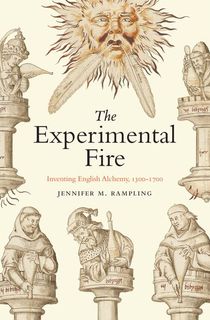What is alchemy, but a testament to humankind’s desire to, even momentarily, hold the power of a god? To be able to manipulate raw matter, create something from nothing, and know the secrets of the universe, rather than exist in dark, empty ignorance?
Fire, earth, water, and air—from the perspective of an alchemist, they were not just the four elements, but four ingredients to start with. Such a notion makes up the basic principles of alchemy, that ancient lovechild of practical science and speculative philosophy, and the grandfather of chemistry and modern medicine.
But the ultimate goal of any alchemist was far less achievable than merely mastering the tricky element of fire. The Latin phrase "magnum opus" now commonly refers to a work of literature, art, or music that is considered the artist's lifetime achievement, such as Marcel Proust’s In Search of Lost Time or Leonardo da Vinci’s “Mona Lisa.” But the term’s original meaning was reserved for any attempt by an alchemist to create the philosopher’s stone, a mystical substance believed to have the power to transform other metals into gold and silver, heal any illness or disease instantly, and even bring immortality to its possessor.
Of course, alchemy had its more down-to-earth uses as well. The arts of metalworking, glassmaking, medicine, advanced cookery and food preservation, cosmetics, and even the dyeing of clothes all originate from the research done by ancient scholars in their laboratories.
Popular cultural texts such as Mary Shelley’s science fiction novel Frankenstein—which takes inspiration from the myth of Prometheus, who was said to have stolen the element of fire from the gods and gifted it to humans for the advancement of civilization—have influenced our perception of science. However, they’ve also drummed into the collective conscience that the act of deconstructing and manipulating the natural world is solely a man’s business. The archetype of the “mad scientist”, such as Victor Frankenstein, is predominantly a male one. But peer through the microscope of history and you will find that alchemy was women’s work just as much as it was men’s work. One such woman was Cleopatra the Alchemist.
Related: 8 Fascinating Ancient History Books Whose Subjects Span the Globe
Cleopatra the Alchemist, who lived in Alexandria either in the 3rd or 4th century CE, was not the same person as Queen Cleopatra VII. Although the brilliant Egyptian ruler, who lived from 69 BCE to 30 BCE, had an interest in scientific experiments, particularly beauty treatments and medicine, she was too busy governing a mighty empire to devote herself entirely to studying the core makings of the universe. Besides her remarkable name, which she shared with a queen, Cleopatra the Alchemist may also have been one of the early scientists who puzzled over the eternal riddle of how to create the philosopher’s stone.

19th-century rendering of the Library of Alexandria.
Photo Credit: WikipediaCleopatra set out to create gold through chemical and scientific means under a controlled environment. She may have also invented the alembic, a distillation apparatus. A copy of her own magnum opus survives in both senses of the word. The Chrysopoeia of Cleopatra, or Cleopatra’s Gold-Making, was both her life's work and purportedly a coded guide to making the philosopher's stone. Cleopatra's contemporaries refer to her as one of four female alchemists who was able to create such a substance.
Preserved on a single sheet of papyrus, the Chrysopoeia is currently being held in the Netherlands at Leiden University. It is notable for being one of the earliest scientific texts authored by a woman.
Related: How Trota of Salerno, 12th-Century Female Gynecologist, Disappeared from History
However, attempts to crack Cleopatra’s mysterious and complicated code of drawings and symbols have so far been unsuccessful. There is no doubt that this was deliberate. Cleopatra was living and working in ancient Alexandria, a bustling intellectual hub full of competitive scholars who would have been happy to get their hands on her writings and take credit for her work. However, what can be deciphered from the text is the appearance of a sketch of a snake eating its own tail.
The symbol, popular in Cleopatra’s time, forms an unbreakable circle. Known as the ouroboros, it represents the passage and changes of time, eternity, and life that never ends. We may not know exactly what Cleopatra intended to convey by sketching such a symbol. But her legacy as one of the first female scientists, a feat we remember centuries later, is in its own way a sort of philosopher’s stone, bringing immortality to her name.

